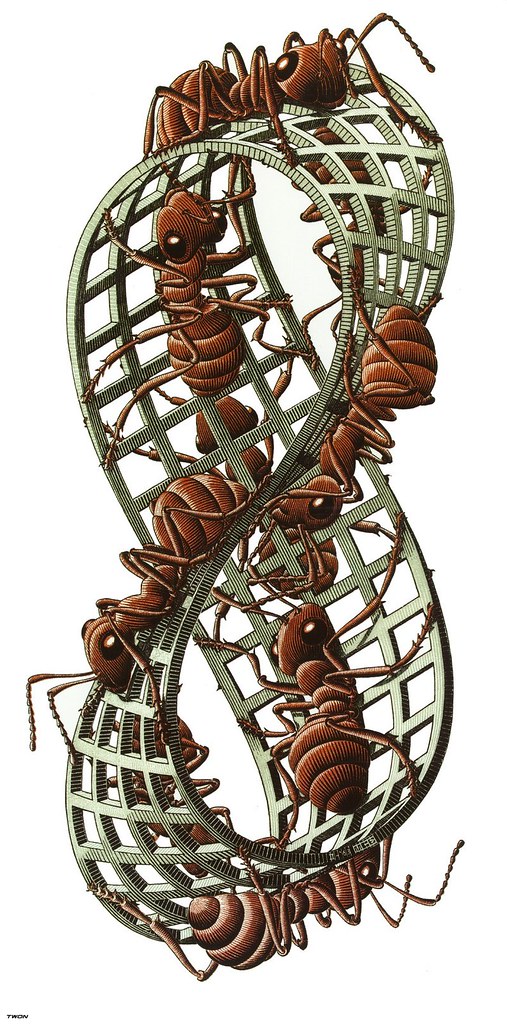
Math can sometimes seem like a very dry subject… you can just have a pencil and paper to do it, and in order to become good at it, you need to do problem after problem: “Practice Makes Perfect” as they say. But as a math teacher, it is nice to have a bag of “math tricks” up your sleeve to show the actual beauty and interesting side of math.
1. One of these tricks is the moebius strip (The Mobius Strip
). The classic one sided band is always admired by all types of students. All you do is get a long rectangular strip of paper, and attach the ends together (with tape or glue). The only thing you have to do is make sure you put in one twist in the paper before you glue the ends together. Now you have a mobius strip. The cool part of the strip is that it only has one edge. To demonstrate this, you take a pencil and start drawing a line on it, while sliding the strip. Eventually you will write on all the sides, without lifting up your pencil. If you want to try some cool things that can be done with a mobius strip: try cutting the strip in half length wise. Another thing you can try is to divide the mobius strip lengthwise into three, and then start cutting along one of the thirds. Cool things come out. (See more math associated with the mobius strip here.
)
2. Of course, math puzzles are another great addition to any math teacher’s repertoire. I sometimes post cool math puzzles on this website. For example:
- Interesting Math Puzzle, How Does it Work?
- Three Doors, One Prize, Probability Puzzle
- Sword of Knowledge, Cute Puzzle, Great for Kids
Also, the math puzzles I invented – the Hexa-Trex puzzles – are a great fun addition to every math class, as a warm up or cool down activity. Since they’re only based on arithmetic, even young students enjoy this easy to learn, yet fun to do, math puzzle. But I usually give it to my high school kids, and they love it. Try some of these puzzles here.
3. Yesterday I came across another wonderful new addition to my math bag of tricks: the Hexaflexagon. If you don’t know what it is, check out the video below (by the very cool Vihart), and I’m sure you’ll fall in love with the hexaflexagon as I have:
I tried making a hexaflexagon, but I didn’t get it on the first try, so here are some more detailed instructions in case you are having trouble as I am: http://www.instructables.com/id/How-to-make-a-hexaflexagon/
If you want more information on the Hexaflexagon, check out these books:
What are some of your tricks in your math teacher’s bag of tricks?


